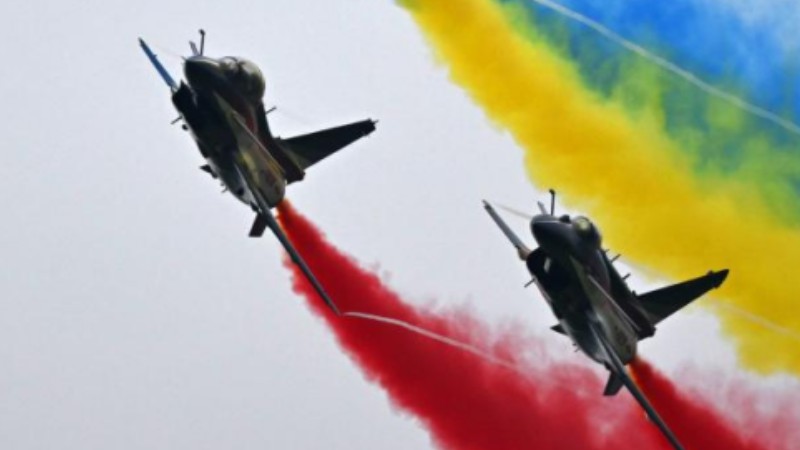Giving China's treasures a modern touch

At the Sichuan University Museum, the Fresh Appeal of National Treasure exhibition runs until Aug 10. WEI XIAOHAO/CHINA DAILY
Exhibition's cultural products combine heritage and creativity
Step into a world where the ancient and modern collide, and prepare to witness a dazzling transformation as cultural artifacts take on a fresh, contemporary identity.
The Sun Bird on display at the Chengdu Jinsha Site Museum has been turned into a resplendent cup, while the bronze running horse from the Gansu Provincial Museum has been recreated as a plush toy with a cheerful smile.
At the Sichuan University Museum in Chengdu, the Fresh Appeal of National Treasure exhibition runs until Aug 10.
This exhibition brings together cultural and creative products from 26 museums, including the Palace Museum, the National Museum of China, the Sichuan Museum, the Jinsha Site Museum and the Sanxingdui Museum.
As part of the "Blossom of Youth" Exchange Activities of World University Athletes, held concurrently with the Chengdu FISU World University Games, the exhibition is a vivid testament to the allure of national treasures.
"This event links sports, culture and other elements together, making it appealing to young people," said Wu Hongliang, head of the Beijing Fine Art Academy.
"A set of letters, a scented sachet, a doll, or even a small refrigerator magnet can all bring fresh radiance to Chinese culture and convey new energy," Wu said.
At the exhibition, even recent history is showcased in creative ways. At the Shenzhen Museum booth, the "Shenzhen reform and opening-up series" has proved quite popular.
Elsewhere, food and oil stamps from the 1980s have been ingeniously transformed into adhesive notes. Notably, one luggage tag has been designed to look like the first stock certificate issued after the founding of the People's Republic of China, commemorating a significant milestone in the country's financial history.
"We always think of young people when designing our cultural and creative products. Last year, we produced two frisbees with a pattern showcasing Shenzhen's history," said Yuan Yan, who works at the Shenzhen Museum.
Huo Wei, head of the Sichuan University Museum, thinks the diverse collection at the exhibition allows visitors to understand the thriving development of Chinese museums, showcasing their grandeur, style and uniqueness.
"Besides the official memorabilia of the games, athletes can find profound historical and cultural elements infused in the cultural and creative products available. Through these aspects of history and culture, they can come to know China and its rich culture, making it a wonderful and effective channel of understanding," Huo said.
First established in 1914 as the West China Union University museum, the Sichuan University Museum was China's first comprehensive university museum. Over the course of a century, it has gathered a collection of over 80,000 cultural relics.
According to Huo, the museum houses five main collections, including archaeology, folk culture and ethnic artifacts.
"Among them, there are some cultural relics and calligraphic pieces that showcase the ball games played in ancient and medieval times, indirectly reflecting China's ancient sports culture, which resonates with the spirit of the gala event being held," he said.
The Chengdu games aim not only to showcase the spirit of sports through athletic competitions but also to foster emotional connections and interactions, Huo said.
Xu Junzhong, head of the Sun Yat-sen University Museum, said their museum not only boasts an exceptionally diverse collection, but also presents a fresh approach to exhibitions.
"We showcase a comprehensive array of knowledge, encompassing science, engineering, agriculture, medicine, information, humanities and nature to highlight the distinctive features of our museum," he said.
Huo said that the younger generation is today's driving force behind museums as they seek to perceive the past and touch the wisdom and creativity of our ancestors through artifacts.
He thinks that through exhibitions, young people around the world can understand China better, opening a window for them to explore not only China's metropolitan culture but also its ethnic, folk and traditional cultures.
"I believe that these exchange activities serve as an excellent platform. Through museum exhibitions, we can engage in dialogue with the world, enabling young people to connect their hearts and gain a deeper understanding and respect for each other's cultures," he said.
Photos
Related Stories
- Culture Fact: Explore the cultural city of Chengdu
- Chengdu Universiade kicks off with spirit of inclusiveness
- Chengdu Universiade | Foreign tennis players embrace spirited atmosphere in Chengdu
- Chengdu Universiade | Foreign working staff impressed by host city Chengdu
- Chengdu Universiade | China's snowboard sensation Su Yiming shows up at opening ceremony
- Chengdu Universiade | A sunny gift to young dream chasers
- Chengdu Universiade | Cauldron lit at opening ceremony, inspiring youth to forge ahead
- Chengdu Universiade | Chen Weiya: opening ceremony conveys message of peace and friendship
- Chengdu Universiade | China's cultural diversity, development vitality displayed, Ghanaian expert says
- Chronicles of giant panda behind Chengdu FISU Games mascot
Copyright © 2023 People's Daily Online. All Rights Reserved.









